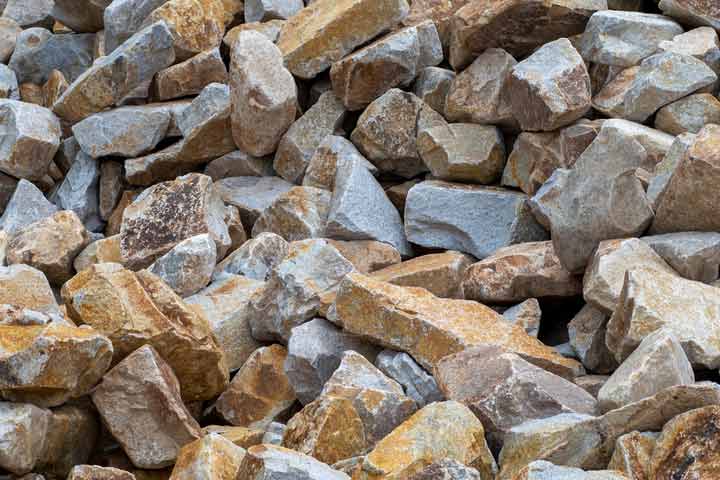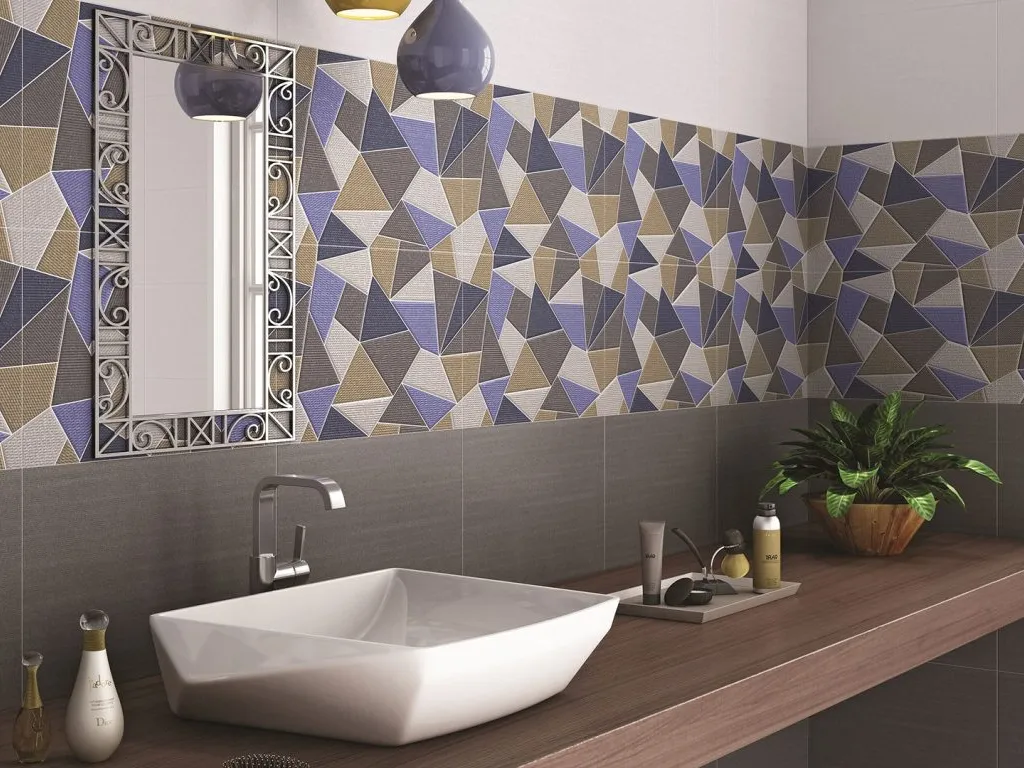There are several different types of bathroom tiles available on the market. The most popular are ceramic and porcelain tiles, which are durable and have a low water absorption rate. After these, the next most popular types are limestone and marble tiles. These tiles have many naturally occurring designs. Mosaic tiles, on the other hand, are popular for their appearance and aren’t as expensive as solid natural stone tiles.
Ceramic
There are many different types of bathroom tiles, but there are also some differences between them. One of the key differences is the slip resistance rating. Bathrooms with barefoot traffic should use a tile with an R9 slip resistance rating or lower. In addition, tiles with a higher slip resistance rating are not suitable for interior floors.
Bathroom ceramic tiles come in a variety of styles and colors. They can be cut by a do-it-yourselfer or installed by a professional. Because they are water-resistant, you can use them without worrying about them being ruined by moisture. In addition, you can find patterns and geometric shapes for your ceramic bathroom tiles.
Ceramic tiles are easier to clean than other bathroom flooring materials. This saves you time and effort. Bathrooms can get very dirty due to grime, dust, and cosmetics. However, ceramic bathroom tiles do not absorb dirt and stains, so you can easily clean them. With just a little hot water, you can wipe them clean without any special cleaning solutions. With proper maintenance, ceramic tiles will last for years.
When choosing ceramic bathroom tiles, consider the size of the room. You can choose a wide range of sizes. If you have a smaller bathroom, opt for tiles with a large surface area. These tiles can accentuate the room’s size and create a dramatic effect. Large bathroom ceramic tiles can be as big as 120×120 cm. Large tiles will add height to the bathroom and minimize the amount of grout.
Ceramic bathroom tiles are available in a variety of colors and designs. Some are waterproof and resistant to most stains. Others feature a pattern that will not fade over time.
Natural stone

Choosing natural stone tiles for your bathroom is a great way to add luxury to your home. They have beautiful colors and textures that will last for many years. Various types of stone have been used as tiling and building materials for centuries. Travertine tiles, for example, were used by the Romans in the Coliseum.
When it comes to natural stone, no two pieces are alike. This is because minerals settle into the stone over time, making it come in a range of different hues, patterns, and textures. Bathroom stone wall tiles can come in white, beige, and dark brown tones. The stone finishes and grout will help keep the tile looking beautiful.
When choosing natural stone bathroom tiles, keep in mind the style of your home. For example, if you have a traditional-style home, Rustic Copper Slate is a great choice. For a more modern style, you might consider Brazilian Slate. The slickness of this flooring material will add to the modern look of your bathroom. Black slate is also a popular option for wet rooms and looks great with matching split-face slate wall panels.
Another advantage of natural stone is its resale value. While natural stone may be expensive, it is durable, and it will increase your home’s resale value. Real estate agents will often mention the presence of natural stone when selling your home. Prospective buyers will think highly of your home if it has natural stone bathroom tiles. However, natural stone requires more maintenance than other bathroom tile materials.
Natural stone bathroom tiles also look great and are highly durable. If you take good care of them, they can last up to a decade or more without needing to be replaced. In addition, if you maintain them well, they are stain-resistant and have a beautiful look.
Glass
Glass bathroom tiles are a stylish and innovative choice for your bathroom. These tiles come in a variety of styles, such as brick-styled tiles, large format 3D designs, beach-inspired driftwood tiles, and modern glass patterned tiles. They are also non-porous, making them the ideal choice for wet areas.
Glass tiles are easy to maintain. You can clean them easily using warm soapy water or a mild cleaning solution such as vinegar. While they are not ideal for the entire floor, they can add a nice touch to a powder room. They are also available in a variety of colors and finishes. You can find glass tiles in pearlescent shades and even mosaics.
Glass tiles can add depth to your bathroom. A bold penny round glass mosaic tile will add a pop of color to a modern bathroom. Its high gloss shine bounces light off its surface, creating a dramatic effect. This tile is perfect as a shower accent tile or feature wall tile. You can also use glass subway tiles to create a stunning effect in a small bathroom.
Another benefit of glass bathroom tiles is that they are easy to maintain. They are highly hygienic and resistant to mold and mildew. They can easily be cleaned with a damp cloth and warm water also resistant to chemical damage. You can even clean them with a mild vinegar solution to remove soap scum.
Another unique feature of glass tiles is their ability to be used for backsplashes. These tiles come in a variety of shapes and sizes and can add a beautiful touch to a bathroom. They are usually more expensive than other types of tiles, so consider this factor when choosing your tile.
Cement
A practical option for bathroom floors and walls, cement tiles provide a tactile, silky feel. They can be used in a traditional or bold pattern and are easy to coordinate with other color schemes. They are also suitable for use halfway up the wall, giving the room a classic look also water resistant, which is an important consideration when choosing tiles for a bathroom.
Cement tiles can be used on walls, shower floors, and backsplashes. The matte finish helps make them naturally slip-resistant. They are not recommended for use in freezing or frosty climates. For regular cleaning, use a pH-neutral cleaner. You can also seal them to prevent staining.
Cement tiles are relatively expensive compared to ceramic tiles. They can cost anywhere from $10 to $30 per square foot. When comparing prices, it’s important to consider the price of the freight, which is often between thirty and forty percent of the cost of the material. The cost of freight will also increase if you are not located near a major shipping lane.
Although ceramic tiles are considered the gold standard for bathrooms, cement tile has made a comeback in the last decade. The material has become a staple of high-end homes and design settings alike. Because of its durability and low water absorption rate, cement tiles can last for years without needing to be refinished.
Before laying cement tiles, it’s important to make sure the concrete is level and dry. This will help identify cracks and increase the bond between the concrete and the subfloor. The concrete must be properly dried after cleaning, so make sure you wait overnight before laying the tiles.
Read Also: The Benefits of Bathroom Vanities
Resin
Resin bathroom tiles are an excellent choice for the bathroom as they are resistant to water and humidity. They also look great in large spaces and complement industrial loft styles also ideal for kitchens and splashbacks are suitable for large spaces and do not require any varnish or sealants. They are also easy to clean and maintain.
The resin used in making these tiles is made from natural or synthetic fibers. They come in a wide range of colors. Epoxy resin is the most common type, and is more durable and stout than polyurethane. However, these two resins have different benefits and can be used for different purposes. Polyurethane is much more flexible than epoxy resin, making it better for restyling the tiles.
Before applying the resin to the tiles, make sure the surface is thoroughly cleaned and dry. It must be free of oil, grease, and solvent residue. The joints must also be free from dust or dirt deposits. It must also be level and free from any gaps or holes. Once the surface has been thoroughly prepared, apply the epoxy resin.
A great choice for bathrooms
Resin tiles are a great choice for bathrooms. They look beautiful and are easy to maintain. Their low porosity prevents stains from penetrating. They are also resistant to scratches. Moreover, they are resistant to stains and bacteria. They are also easy to disinfect. Porcelain stoneware and resin tile are similar in aesthetic look, but porcelain stoneware is more durable than resin.
If you want to use epoxy resin for your bathroom tiles, you must carefully follow the instructions on the product. The two components should be mixed in a precise ratio for optimal hardening. Using too little hardener may lead to insufficient hardening while using too much will lead to a porous floor covering. The process of mixing the two components is not complicated, but make sure to follow the manufacturer’s instructions.

